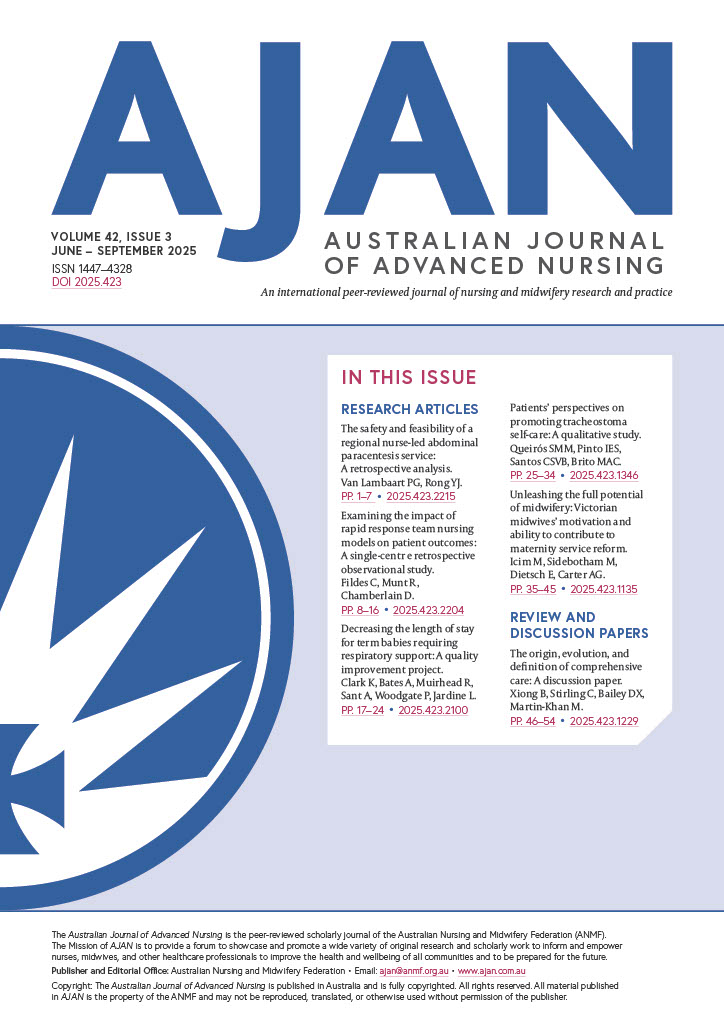Examining the impact of rapid response team nursing models on patient outcomes: a single-centre retrospective observational study
Main Article Content
Keywords
critical care nursing, health care rationing, hospital rapid response team, intensive care units, workforce
Abstract
Objectives: To determine whether rapid response team (RRT) end-of-call patient outcomes differ between a dual-role intensive care unit (ICU)/RRT nursing model and a partially dedicated RRT nursing model, to report any associations between ICU adverse events and RRT calls, and to describe RRT call characteristics.
Background: ICU nurses commonly staff RRTs but juggling simultaneous ICU and RRT duties may compromise patient safety and care.
Methods: A single-centre retrospective cohort study compared all ward-based RRT calls during two equivalent eight-month periods at a large Australian adult teaching hospital: January–August 2017 (non-dedicated model) and January–August 2018 (partially dedicated model). Data was obtained primarily from the RRT database. Descriptive statistics and binomial proportion tests compared call characteristics. Unadjusted logistic regression examined associations between nurse role (dual or dedicated) and end-of-call outcomes: remained on ward, transferred, or died (primary outcome = death; secondary = transfer).
Results: Of the 6,955 RRT calls analysed, the proportion attended by dual-role ICU/RRT nurses fell markedly after two dedicated nurses were introduced, down from 39.4% (1366/3466) in 2017 to 11.6% (403/3489) in 2018 (χ²(2)=838.4, p < 0.001). Across both periods, dual-role nurses still managed 1,769 calls (25%). RRT calls attended by dual nurses carried more than threefold higher odds of death (odds ratio [OR]: 3.015 [95% CI: 1.796–5.061], p < 0.001), double the odds of any transfer off the ward (OR: 2.027 [95% CI: 1.756–2.340], p < 0.001), and 43% higher odds of ICU transfer specifically (OR: 1.428 [95% CI: 1.148–1.776], p = 0.001). The pattern of RRT trigger reasons changed significantly between 2017 and 2018, with fewer calls for cardiac arrest or low oxygen saturation and more calls initiated because staff were “worried,” among other shifts (χ² (15) = 61.95, p < 0.001). No statistically significant associations could be demonstrated between ICU-recorded adverse events and RRT call characteristics; nevertheless, exploratory trends in the data suggest possible links that require further research.
Conclusions: The dual ICU/RRT nursing model was associated with poorer patient outcomes, including higher mortality and more frequent transfers. In contrast, the partially dedicated RRT nursing model was associated with more favourable outcomes.
Implications for Clinical Practice: The findings suggest that dedicated RRT nursing staff may improve patient outcomes by reducing the dual nurses' workload, highlighting the importance of workload management in RRT staffing. Further studies are warranted to explore these results in other settings.

